Best of Rajasthan with Taj Mahal
Rajasthan awaits with timeless charm – an adventure through palaces, deserts, and traditions.
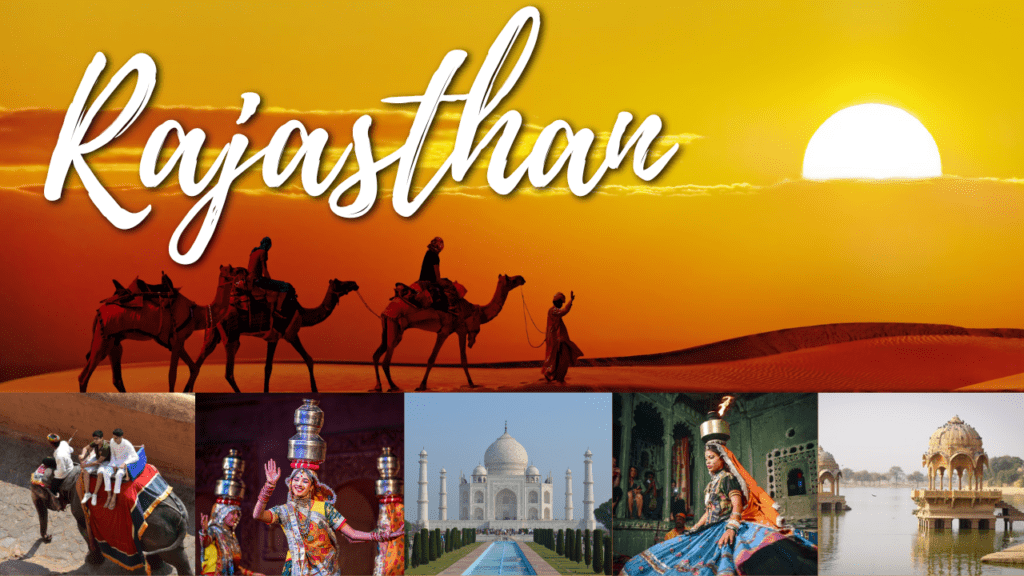
- Duration: 13 Days, 12 Nights
- Itinerary: Delhi – Agra – Abhaneri – Jaipur – Deogarh – Udaipur – Ranakpur – Jodhpur – Bikaner – Mandawa – Delhi.
🌟 Exclusive Private Tours (4–12 Guests) 🌟
Embark on a curated journey with our intimate group experiences, designed for discerning travelers seeking personalized exploration. Our private tours offer tailored itineraries, ensuring a seamless blend of comfort, culture, and exclusivity.
📅 Upcoming Travel Dates 📅
-
07 February 2026 – 20 February 2026
Embark on an unforgettable journey, rich in history, culture, and celebration. -
23 February 2026 – 08 March 2026
Experience the vibrant Holi festival, blending cultural exploration with joyous celebrations.
| UNIT | NETT PER PERSON RATES IN USD |
|---|---|
| Each of 04 paying pax double / twin sharing | 2225 USD |
| Each of 06 paying pax double / twin sharing | 2020 USD |
| Each of 08 paying pax double / twin sharing | 1865 USD |
| Each of 10 paying pax double / twin sharing | 1750 USD |
| Each of 12 paying pax double / twin sharing | 1650 USD |
- Services of accompanying Tour Guide from arrival till departure
- All ground transportation as detailed in the itinerary using air conditioned Vehicle
- Double / twin room with breakfast
- Farewell Dinner in Delhi on last evening before departure
- Monument entrance fee mentioned in the Tour Itinerary
- Heritage Walk in Old Delhi
- Jeep ride at Amber Fort in Jaipur
- Rickshaw ride in Jaipur
- Jeep Safari to Bishnoi Village
- Boat Tour in Udaipur at Lake Pichola
- Visit to the Camel Farm in Bikaner
- Water Bottles during the Tour
- Currently applicable taxes
Not included services:
- Visa application process and fees
- International airfares & taxes
- Camera and Video charges at the monuments where applicable
- Any expenditure of a personal nature, such as drinks, tips, laundry, telephone charges, etc.
- Insurances (travel cancellation insurance, health insurance, etc)
- Any new tax imposed by the government
- Any chosen optional activity / Progra
| CITY | HOTELS | NO. OF NIGHTS | CATEGORY |
|---|---|---|---|
| Delhi | Radisson Sec.49 Gurgaon | 2 | 5 Star |
| Agra | Fairfield by Marriott Agra | 1 | 5 Star |
| Jaipur | Alsisar Haveli | 2 | Heritage |
| Udaipur | Fateh Niwas | 2 | Heritage |
| Jodhpur | Ratan Vilas | 2 | Heritage |
| Bikaner | Gaj Kesri | 1 | Heritage |
| Mandawa | Udai Vilas Palace | 1 | 4 Star |
| Delhi | Vivanta by Taj | 1 | 5 Star |
*or similar category Hotels. Check-in / out time is 12 noon at all the hotels, except Delhi (Check-in: 1400 hrs, Check-out: 12 noon) Total Number of Night/s: 12 Nights
IMPORTANT:
1. Kindly note that names of hotels mentioned above only indicate that our rates have been based on usage of these hotels and it is not to be construed that accommodation is confirmed at these hotels until and unless we convey such confirmation to you. In the event of accommodation not becoming available at any of the above mentioned hotels we shall book alternate accommodation at a similar or next best available hotel and shall pass on the difference of rates (supplement/reduction whatever applicable) to you. 2. Our offer is based on usage of base category rooms at the mentioned hotels (unless specified otherwise) and if this category of rooms is not available we shall try to confirm accommodation in next available higher category of rooms and shall advise supplementary cost involved while conveying the status.ITINERARY
Arrive in Delhi. On arrival, you will be greeted and assisted by our representative and transferred to the Hotel. (Check-in time 1400 hrs)
DELHI - It is a city that bridges two different worlds. Old Delhi, once the capital of Islamic India, is a labyrinth of narrow lanes lined with crumbling havelis and formidable mosques.
In contrast, the imperial city of New Delhi created by the British Raj is composed of spacious, tree-lined avenues and imposing government buildings. Delhi has been the seat of power for several rulers and many empires for about a millennium.
Many a time, the city was built, destroyed, and then rebuilt here. Interestingly, several of Delhi's rulers played a dual role, first as destroyers and then as creators.
Overnight rest at a Hotel in Delhi.
After breakfast, proceed for a visit of Delhi, including the following:
Heritage Walk in the Old City
Enjoy a walking tour of the back streets of Old Delhi. Walk through the charming quarters of this historic area. The bazaars of Old Delhi are vibrant and filled with interesting street food, crowned with the oldest shops offering various delicacies. The area is also home to several small temples, shrines, old mosques, and protected monument sites. Cows wander the streets, and small dharamshalas (rest houses) and pyaus (water stations) attest to the pious contributions of local merchants. This walk offers a unique glimpse into life in the narrow, crowded lanes of Old Delhi, where adjacent houses share common walls and everyone knows each other.
Raj Ghat
Raj Ghat is a memorial to Mahatma Gandhi. It is a black marble platform marking the spot of Gandhi’s cremation on 31 January 1948, a day after his assassination. The memorial is left open to the sky, with an eternal flame burning perpetually at one end. It is located on the banks of the Yamuna River in Delhi, on Ring Road (officially known as Mahatma Gandhi Road). A stone footpath flanked by lawns leads to the walled enclosure housing the memorial.
Drive Past the Government Buildings
New Delhi is home to several government buildings and official residences showcasing British colonial architecture. Today, we will drive past a few of them, such as:
The Parliament House, designed by Baker, is 173 meters in diameter.
The Rashtrapati Bhawan, formerly the Viceroy’s residence and now the official residence of the President of India. Designed by Lutyens, it beautifully blends Western and Eastern architectural styles.
Photo Stop at the India Gate
In the heart of New Delhi stands the 42-meter-high India Gate, an "Arc-de-Triomphe"-like archway at the center of a crossroad. Much like its French counterpart, it commemorates the 70,000 Indian soldiers who died fighting for the British Army during World War I. Beneath the arch lies the Amar Jawan Jyoti, a flame honoring the Indian Armed Forces’ soldiers who lost their lives in the Indo-Pakistan War of 1971.
Qutub Minar
Qutub Minar is a towering, 73-meter-high victory monument, built in 1193 by Qutab-ud-din Aibak. The tower has five distinct storeys, each marked by a projecting balcony, tapering from 15 meters in diameter at the base to just 2.5 meters at the top. The first three storeys are made of red sandstone; the fourth and fifth are of marble and sandstone. At the foot of the tower stands the Quwwat-ul-Islam Mosque, the first mosque built in India. In its courtyard is a 7-meter-high iron pillar. It is said that if you can encircle it with your arms while standing with your back to it, your wish will be fulfilled.
Overnight at the hotel in Delhi.
After breakfast, drive to Agra.
AGRA - The city of the inimitable “TAJ MAHAL”.
The architectural splendour of the mausoleums, the fort, and the palaces is a vivid reminder of the opulence of the legendary Mughal Empire. While its significance as a political center ended with the transfer of the capital to Delhi in 1634 by Shah Jahan, its architectural wealth has secured its place on the international map. A pleasant town with a comparatively slow pace, Agra is known for its superb inlay work on marble and soapstone by craftsmen who are descendants of those who worked under the Mughals.
On arrival in Agra, visit the following:
Taj Mahal
Taj Mahal, or Crown of the Palace, is a white marble mausoleum built by Mughal Emperor Shahjahan as a memorial to his beloved wife, Mumtaz Mahal. A world-renowned wonder, the Taj Mahal looks the same from all four sides and is widely recognized as "the jewel of Muslim art in India and one of the universally admired masterpieces of the world's heritage". The Taj Mahal is phenomenal not in the beauty alone but in the deep planning and design that went into its making. This enchanting mausoleum started in 1631, and it took 22 years to complete, with the help of an estimated 20,000 workers. (It remains closed on Fridays.)
Agra Fort
The great Mughal Emperor Akbar commissioned the construction of the Agra Fort, although additions were made till the time of his grandson Shahjahan. The forbidding exteriors of this fort hide an inner paradise. There are several exquisite buildings like Moti Masjid - a white marble mosque akin to a perfect pearl; Diwan-I-Am, Diwan-I-Khaas, Musamman Burj - where Shahjahan died in 1666 A.D.; Jahangir's Palace; Khaas Mahal and Shish Mahal. The massive Agra Fort is 2.5 km long and is considered the predecessor of the Delhi Red Fort.
Overnight at the hotel in Agra.
After breakfast, drive to Jaipur, en route visit Abhaneri.
Abhaneri
On the way to Jaipur, visit the village of Abhaneri. Abhaneri is a small village with a population of approximately 2,000 people. The village is known for Chand Baori Stepwell. Stepwells were very important in the past. The purpose was to collect the Rainwater. Stepwell Chand Baori is the largest in India.
Later proceed to Jaipur.
JAIPUR - The fascinating capital of the marvelous state of Rajasthan. Jaipur is popularly known as the Pink City, thanks to the color of its buildings. It was built in 1727 A.D. by Maharaja Sawai Jai Singh II and followed a grid system, which made it the only planned city of its time. A young Bengali architect Vidhyadhar Bhattacharya designed the city by Shilpa Shastra - an ancient Hindu treatise on architecture. There are innumerable sagas and stories of culture, traditions, practices, and valor. This diverse land of rich cultural heritage is a royal treat for tourists all over the world.
On arrival in Jaipur, transfer to Hotel. Overnight at the Hotel in Jaipur.
After breakfast, city tour in Jaipur including the following :
Amber Fort
The Amber Fort, set in picturesque and rugged hills, is a fascinating blend of Hindu and Mughal architecture. Constructed by Raja Man Singh I in 1592 and completed by Mirza Raja Jai Singh, the fort was made in red sandstone and white marble. Amber is the classic and romantic fort-palace with a magnificent aura. The interior wall of the palace depicts expressive painting scenes with carvings, precious stones, and mirror settings. Built mainly for the warring enemies as a safe place, the heavily structured walls could defend the residents within the ramparts of the fort.
Photo stop at the Hawa Mahal Palace
The poet king Sawai Pratap Singh built this Palace of Winds. This is easily the most well-known landmark of Jaipur and is also its icon. This five-storey building overlooking the busy bazaar street is a fascinating example of Rajput architecture and artistry with its delicately honeycombed 953 pink sandstone windows known as jharokhas. It was originally built for the ladies of the royal household to watch everyday life and processions in the city from their veiled comfort.
City Palace
Located in the heart of the walled city, the City Palace Complex gives you an idea about the farsightedness of the founder of Jaipur, Maharaja Sawai Jai Singh II. He left behind a legacy of some of the most imposing and magnificent architecture in the city. Maharaja Sawai Jai Singh II built many buildings, but some of the structures were also built by later rulers. The palace is a blend of Mughal and Rajput architecture, and the ex-royal family still lives in a part of the palace.
Jantar Mantar
The Jantar Mantar is a collection of architectural astronomical instruments, built by Maharaja (King) Jai Singh II between 1727 and 1734. It is modeled after the one that he had built for him at Delhi. He had constructed a total of five such facilities at different locations, including the ones at Delhi and Jaipur. The Jaipur observatory is the largest and best-preserved of these. It has been inscribed on the World Heritage List as "an expression of the astronomical skills and cosmological concepts of the court of a scholarly prince at the end of the Mughal period".
Later in the afternoon, enjoy a rickshaw ride in the old city and explore the local markets of Jaipur.
Overnight at the Hotel in Jaipur.
After breakfast, drive to Deogarh.
Deogarh is located at an altitude of about 2100 feet above sea level and is cooler than other parts of Rajasthan. Deogarh Mahal, which is a main attraction at Deogarh, was founded in the year 1670 AD by Rawal Dwarka Das Ji as a family residence. From the beginning, Deogarh Mahal has been a cultural hub for village activity and has remained an integral ambassador of economy and heritage of the Mewar Region. Mahal highlights the rich history, art, and traditions of India throughout the property with expressive colours and intricately detailed furnishings.
Later in the evening, stroll through the local bazaar in the town.
Overnight stay at Deogarh Mahal in Deogarh.
After breakfast, drive further to Udaipur.
UDAIPUR – The “City of Lakes” was founded in 1559 AD as the capital town of the former Mewar state by Maharana Udai Singh on the eastern banks of the Lake Pichola. The rich cultural, social, and natural heritage, aesthetic beauty, ecological richness, so far preserved through the surrounding lakes, serene and opulent hilly range of the Aravalis, lush green vegetation and pleasant gardens, and harmoniously built forms present a unique condition of scenic beauty. The magical beauty of Lake Pichola allures visitors again and again.
In the evening, explore the city by walk.
Overnight at Hotel in Udaipur.
Optional: Cycling Tour at Sunrise
Highlights
Cycle the city streets to absorb the local atmosphere
All necessary equipment included
Breakfast included
Free hotel pickup and drop-off included
Private guide for a more personalized experience
What to Expect
The tour begins with pickup from the hotel at 06:30 AM. The day starts early to avoid traffic and catch a glimpse of the beautiful sunrise. Cycling starts at 07:30 AM after a briefing on precautions and other instructions. Cycle through the historic old city of Udaipur.
Pedal through small villages and picturesque countryside at dawn to enjoy the tranquil surroundings. Most of the ride is on fairly level and easy terrain, with a few small challenging hills. You'll pedal along the banks of shimmering lakes and take a short rest to enjoy the views while having your packed breakfast. The trail ends at 09:30 AM.
It is a 20 km moderate-level ride on a mountain gear bicycle. A cyclist and a safety vehicle accompany you along the entire route.
Inclusions:
Hotel pickup and drop-off
Use of bicycle
Use of helmet
Local guide
Packed breakfast
Additional Info
Not recommended for participants with back problems
Not recommended for participants with heart conditions or other serious medical issues
After breakfast, proceed for a visit of Udaipur, including the following:
City Palace
City Palace towers over Lake Pichola. Maharana Udai Singh initiated the construction of the palace, and successive Maharanas added several palaces and structures to the complex while maintaining remarkable uniformity in design. Entry to the palace is through the Hathi Pol, the Elephant Gate. The Bari Pol or Big Gate leads to the Tripolia, the Triple Gate. It was customary to weigh the Maharaja under this gate in gold and silver, which was then distributed to the populace. The balconies, cupolas, and towers of the palace offer a wonderful view of the lake.
Jagdish Temple
Jagdish Temple is one of the most famous temples in Udaipur. Located in the old city, this temple is built in the Indo-Aryan style of architecture. In 1651, Maharana Jagat Singh built this temple, dedicated to Lord Vishnu (Laxmi Narayan), the preserver of the universe. It is the largest temple in Udaipur. The gateway to the temple is about 150 meters from the Bara Pol of the City Palace.
Sahelion ki Bari
Maharana Sangram Singh built Sahelion ki Bari in the mid-18th century. This 'Garden of the Maidens' reflects the lifestyle and refined taste of the court ladies. The beautiful gardens feature four pools with dainty kiosks, flowerbeds, lawns, fountains, and shaded trees, all enclosed within high walls. The fountains operate solely by water pressure without the use of pumps. The garden also includes a lotus pool and a sitting room decorated with paintings and glass mosaics.
Boat Ride on Lake Pichola
Enjoy an evening boat ride on Lake Pichola. Fringed with hills, gardens, havelis, ghats, and temples, Lake Pichola is the scenic heart of Udaipur. This picturesque boat ride not only offers breathtaking views of the lake and surrounding mountains but also passes by significant historical monuments located along the lakeside or even within the lake.
Overnight at Hotel in Udaipur.
After breakfast, drive to Jodhpur. Enroute visit the Ranakpur Jain Temple.
Ranakpur
The beautifully sculptured Jain temples mark the glory of this renowned place. Considered one of the five holy places for the Jain community, these temples were created in the 15th century during the reign of Rana Kumbha. The temples are enclosed within a wall. The central Chaumukha (four-faced temple) is dedicated to Adinathji. The temple is an astounding creation of architectural splendour, with 29 halls and 1,444 pillars, all distinctly carved—no two pillars are alike.
Later, drive further to Jodhpur.
JODHPUR
Known as the 'Blue City,' Jodhpur was founded on the edges of the Thar Desert in 1459 A.D by Rao Jodha, a chief of the Rathore clan of the Rajputs. Jodhpur is the second-largest city in Rajasthan, after Jaipur, and is encircled by a high 10 km long wall. The historic grandeur, exquisite handicrafts, folk dances, music, and the brightly attired people lend an aura of romance to the city.
Flanked on its western side by the Meherangarh Fort, and on the eastern side by the stately sandstone Palace of Umaid Bhawan, the monuments, temples, and gardens of Jodhpur depict a multi-faceted grandeur. The beauty and imagination that have gone into the making of this monumental city proclaim the life-springs of creative genius that appear incongruent with the harshness of this land and its climate.
On arrival in Jodhpur, transfer to the hotel.
Overnight at the hotel in Jodhpur.
After breakfast, proceed for a visit to Jodhpur, including the following:
Mehrangarh Fort
Mehrangarh Fort is about 5 km from Jodhpur Town. Guarding the city below and crowning a perpendicular cliff, the fort was founded by Rao Jodha in 1459 AD when he shifted his capital from Mandore. Standing sentinel to the city below, it overlooks the rugged and rocky terrain and houses a palace intricately adorned with long carved panels and latticed windows, exquisitely wrought from red sandstone.
The apartments within have their own magic—the Moti Mahal (Pearl Palace), Phool Mahal (Flower Palace), Sheesh Mahal (Mirror Palace), Sileh Khana, and Daulat Khana—with a rich and varied collection of palanquins, howdas, royal cradles, miniature paintings of various schools, folk music instruments, costumes, furniture, and an impressive armoury.
The display of cannons on the ramparts near Chamunda Temple is among the rarest in India. As you climb up, folk musicians revive the grandeur of a bygone era.
Jaswant Thada
Located adjacent to Mehrangarh Fort is Jaswant Thada, the graceful marble cenotaph of Maharaja Jaswant Singh II. His son, Maharaja Sardar Singh, built this monument, known as the Taj Mahal of Marwar, in memory of Maharaja Jaswant Singh II of Jodhpur. The main memorial has been built like a temple with intricately carved marble stone. A visit to this structure is through the rocky hills, giving it a secluded and mystic aura.
In the afternoon, enjoy a Jeep Safari to Bishnoi Village
Enjoy a Jeep Safari to the Bishnoi villages. The Bishnois are a community in Rajasthan famous for their rich cultural Rajasthani life and their true love for nature and animals. A memorable outing in jeeps will lead you to various traditional villages, where you can witness local handicrafts such as shoemakers, pottery hand weaving, and also see men in their traditional attire and women clad in ancestral silver jewelry. En route, you can watch and photograph wildlife such as blackbucks, chinkaras, peacocks, etc.
Overnight at the hotel in Jodhpur.
After breakfast, drive to Bikaner.
Bikaner – Bikaner plays a prominent role in the history of Rajasthan. A Rajput prince, Rao Bika Ji, who was the descendant of Rao Jodha Ji, the founder of Jodhpur, founded his kingdom in Bikaner in 1486 AD. Bika Ji chose an infertile land called ‘Jungladesh’ and shaped it into an imposing city called Bikaner. Bikaner has many wonderful buildings made of reddish-pink sandstone that transcend the adjoining barren wilderness.
In the afternoon, visit the Junagarh Fort.
Junagarh Fort is one of the few forts not built on a hilltop. The fort complex consists of palaces, courtyards, pavilions, and balconies. One of the most impressive structures in the Junagarh Fort complex is the Anup Mahal. Its elaborately decorated walls are covered in red and gold with colored glass inlay.
Overnight at the hotel in Bikaner.
After breakfast, drive to Mandawa. On the way, visit Karni Mata Temple in Deshnok. (Optional)
Karni Mata Temple is located in Deshnok and is also known as the Temple of Rats. The temple is considered home to as many as 20,000 sacred rats, which live and are protected here. The 20,000 rats, known as Kabbas, are believed to be 20,000 army men who deserted a nearby battle. Although the sin of desertion was punishable by death, Karni Mata spared their lives and transformed them into rats who have lived here since then. Despite the thousands of rats, no cases of plague have ever been found in the temple or around it. If a rat is killed in the temple, it must be replaced with a rat of similar weight and size, made of solid gold.
Later, proceed to Mandawa and enjoy a walk in the village.
Mandawa:
Mandawa is a bustling town renowned for its elaborate havelis (merchant houses) adorned with vibrant frescoes. These havelis, once the residences of wealthy merchants, display exquisite artwork depicting scenes from Hindu mythology, historical events, and daily life. Each haveli showcases unique architectural styles and intricate designs.
Overnight at the hotel in Mandawa.
After breakfast, drive to Delhi. Depending on the departure time, rest and refresh in a hotel where you’ll have a room before departure and end the journey with a farewell dinner.
Later, transfer to the airport on time to board your flight back home.
GALLERY / PHOTOS
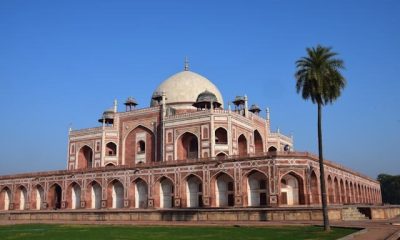



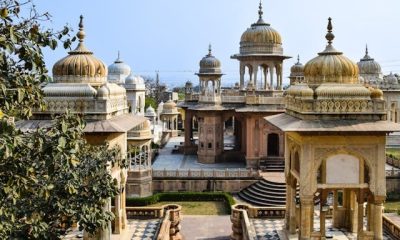
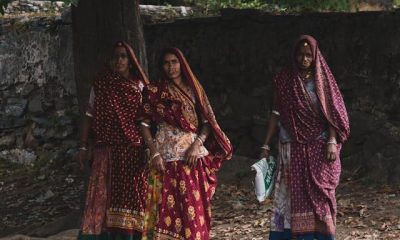
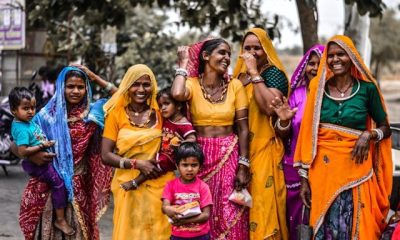

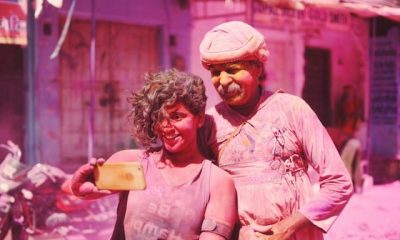

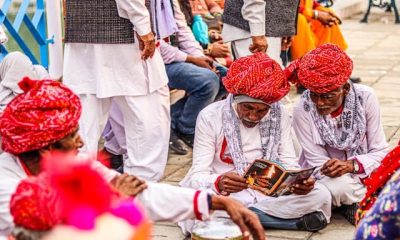

MORE PACKAGES
OTHER TRAVEL PACKAGES

